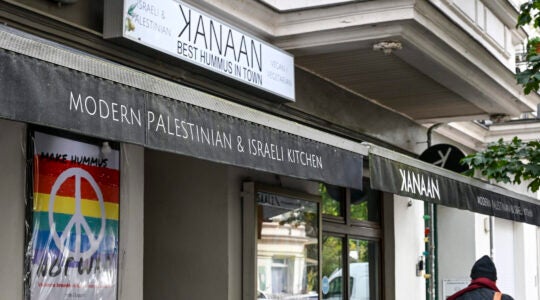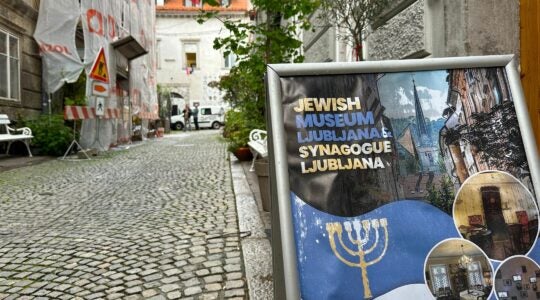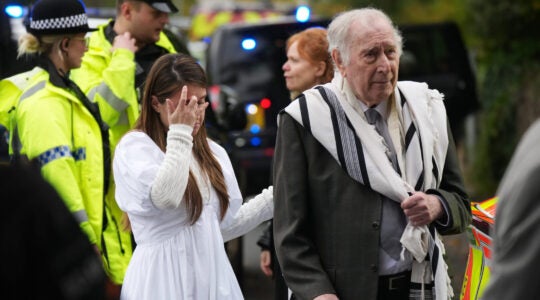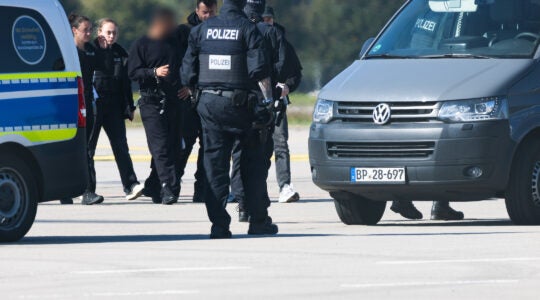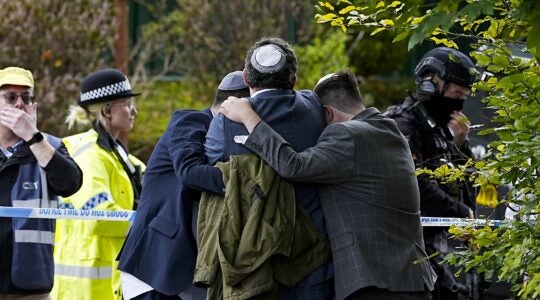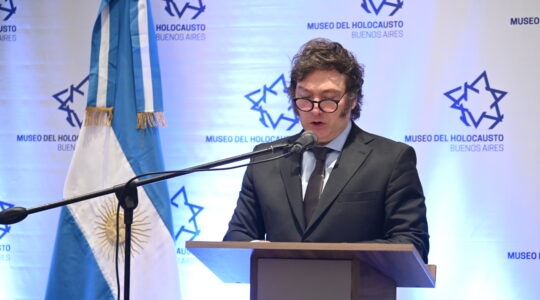PORT-AU-PRINCE, Haiti (JTA) — When I saw the news alert about a 7.0 magnitude earthquake in Haiti, I was in the Manhattan production house where I work. I am no geologist, but I knew enough to know this was a big one.
Though I quickly returned to work, by the next morning I had decided I couldn’t go on as if nothing had happened. I wanted to go down there to help; I just wasn’t quite sure how.
I called my good friend Dr. Craig Zebuda, who specializes in emergency medicine, and asked him to join me on a trip to Haiti. Craig agreed without hesitation.
I then got on the phone with Jane Oster, a philanthropist whose huge heart I knew I could count on.
“I want to help,” I told her.
“So do I,” she said. “What do you need?”
She gave me twice the amount I asked for.
The next thing I knew we were on a plane to Santo Domingo, Dominican Republic, on our own private rescue mission. The plan was to rent a car and drive to Haiti right after buying all the things we forgot to pack in the few hours we had to prepare for our journey.
But when we landed, no car rental agency would allow their vehicle to be driven to Haiti. Determined to get there, we teamed up with a strong-willed, Brooklyn-born Haitian woman we met at the airport named Regine, who was on her own quest to find her relatives in one of the most hard-hit neighborhoods of Haiti’s capital.
Hundreds of dollars later, cobbling together different forms of transportation, we arrived at the border only to learn that it was closed for the night. When it reopened in the morning, we boarded the roof of a little Haitian truck, making our way on a dirt road toward the capital.
As we approached Port-au-Prince, the pastoral countryside turned into an urban death trap. We were stunned by the scale of devastation and taken aback by the smell of decomposing bodies.
The driver stopped at the damaged National Palace, refusing to go further.
“It’s too dangerous,” he said.
We made the last leg of our trip on foot, climbing a hill to search for Regine’s family. The scale of the disaster was beyond anything my mind could grasp. Body parts extended from the rubble. Confused relatives sat nearby, their eyes dimmed with despair.
We found Regine’s family members in good condition. Their house remained intact, surrounded by piles of rubble. Neighbors were digging with their hands through the debris; no rescue team was anywhere to be found in this part of the city.
It was about 72 hours after the quake, the voices of those trapped alive were fading and help could not arrive quickly enough.
We stumbled down the road carrying boxes of medical equipment, a camera and two backpacks as we looked for a place to stay for the night. We encountered the first international rescue team down the hill, just as they pulled an exhausted but healthy woman from the rubble of what used to be a seven-story school.
It took me a second to recognize the accents. It was the ZAKA team from Israel, who happened to be in Mexico when the quake occurred and teamed up with the Mexican delegation for the rescue mission in Haiti.
“We are here to help,” we said.
“You cannot stay outside after sundown; you will get shot,” they told us.
We jumped on their truck and were escorted by UN peacekeepers from Jordan, of all places, to the Green Zone at the airport, which was guarded by U.S. troops. Some 40 hours after we left New York, our mission to help the people of Haiti didn’t seem to be very effective at that point. Exhausted, we fell asleep on the tarmac.
We awoke to the roar of a 747 jumbo jet — an El Al plane. Except for the Americans, who were out in force all around the city, the Israeli delegation seemed to us to be by far the largest, most organized and most effective team. We joined them, and from that moment on, our personal mission took a crucial turn.
At the crack of dawn we already were on our way to build the largest field hospital in Haiti, an Israeli operation equipped with imaging and X-ray machines, an emergency department, orthopedic surgeons and skilled support staff. By 10 a.m., the first patients were being admitted to the triage area.
Within a couple of hours the hospital was operating at capacity, and the work flow from the triage area to the ER to the different clinics seemed seamless. Craig was working magic in the ER, and I was carrying stretchers, assembling cots and using my French to help translate the patients’ Creole for the doctors.
The sleepless nights didn’t matter now; we were finally doing what we came here to do.
Over the next two days we saw a bleeding newborn, wounded pregnant women, a man with a bullet wound in his chest, amputations and all manner of orthopedic injuries. Dehydrated and hungry, the patients were stabilized and treated quickly, proficiently and with a smile by the hospital personnel, most of whom were doctors in the Israeli army reserves.
These medical personnel were regular Israelis who left their families on short notice to cross an ocean, work around the clock and sleep in the field to care for people they never met.
After two days we went back into the city and found the lack of running water, electricity and food was taking its toll, pushing people to the edge. The atmosphere was very tense, and there were occasional riots. Prices for basic services shot up, and whoever had a car with a tank of gas was king.
We wandered around. The same desperate people were just where we left them two days earlier, but now that the dust had settled, reality seemed even gloomier than before.
As just two people on a rescue mission without any organization, we realized our ability to help these people was limited. We gave away all the medicine, batteries and food we had and made our way to the Dominican border.
Before Craig and I parted, I asked him whether he thought two individuals alone could really make a difference.
“Do you think we were able to save anybody?” I asked.
“We were saving ourselves,” he answered.
(Lior Etziony is a filmmaker and multimedia producer. Born and raised in Israel, he now lives in New York.)
JTA has documented Jewish history in real-time for over a century. Keep our journalism strong by joining us in supporting independent, award-winning reporting.
